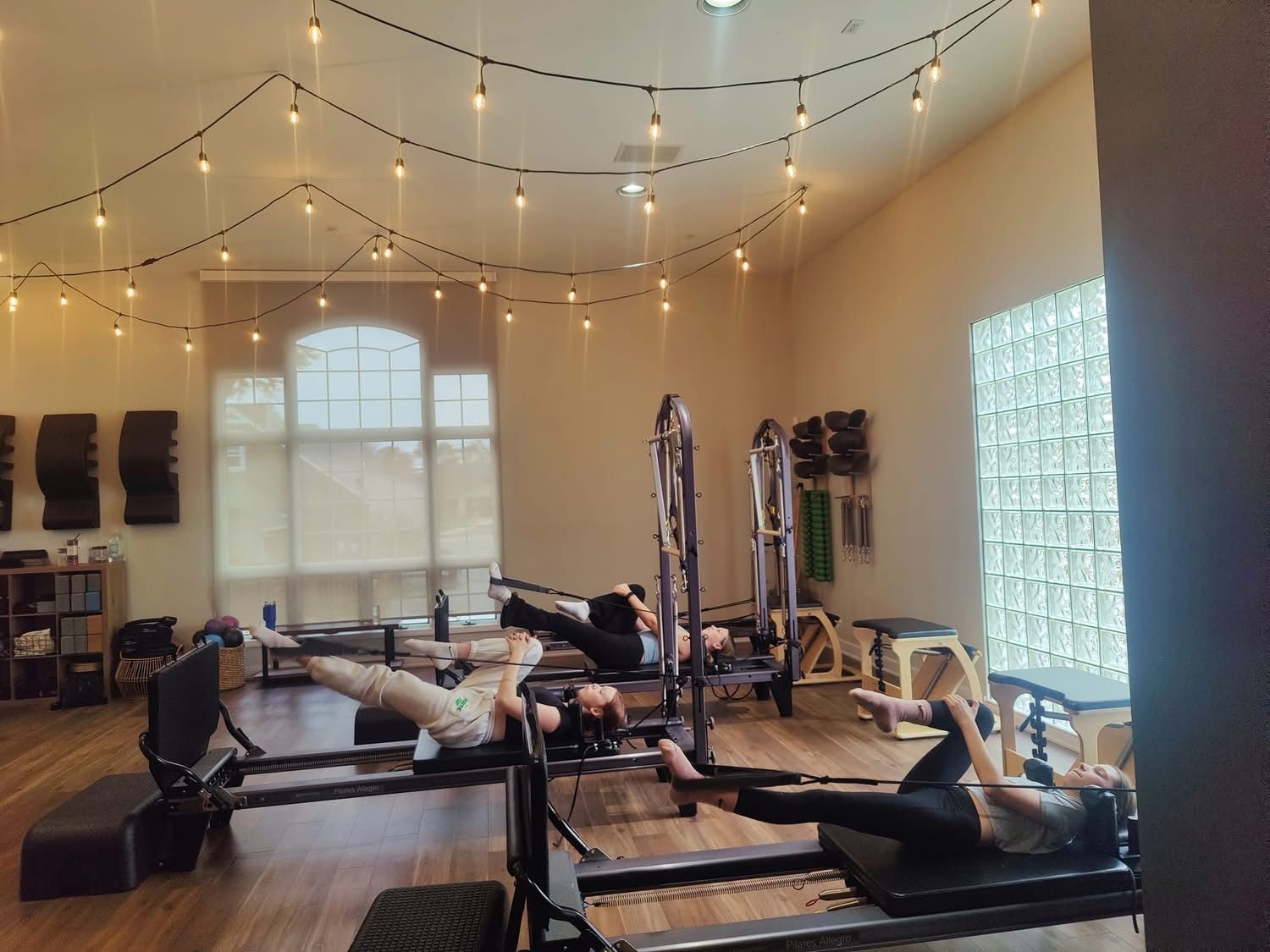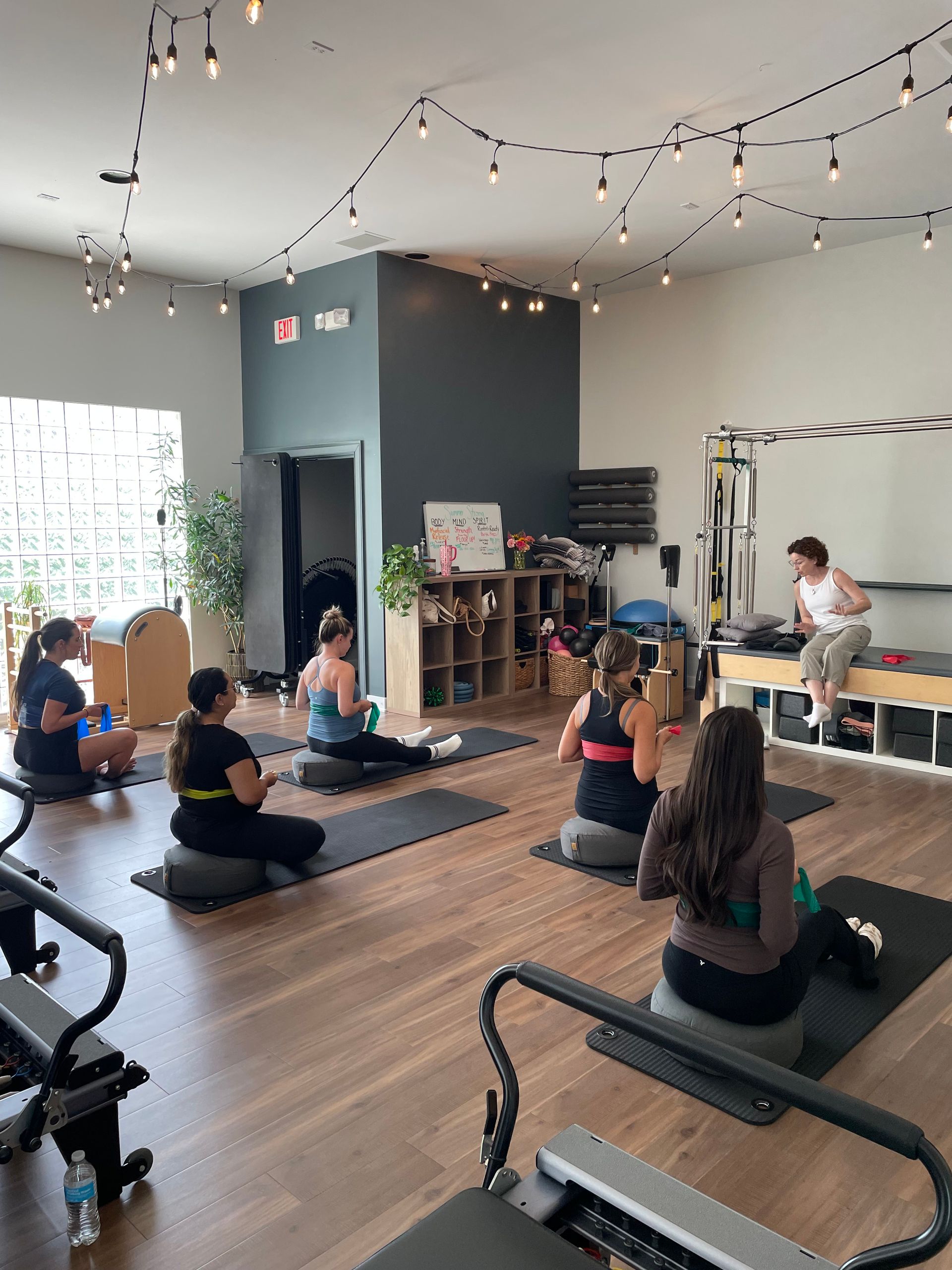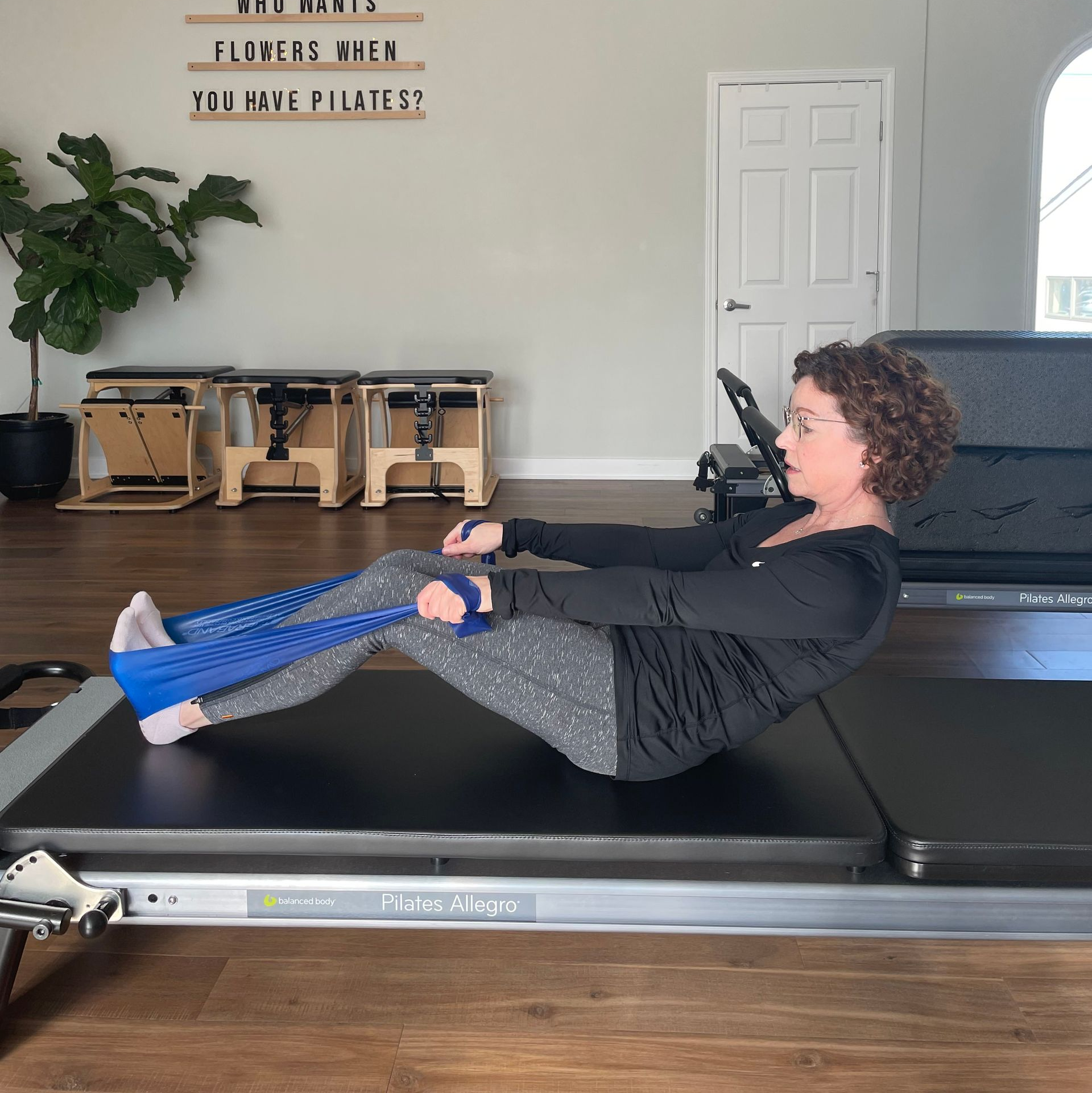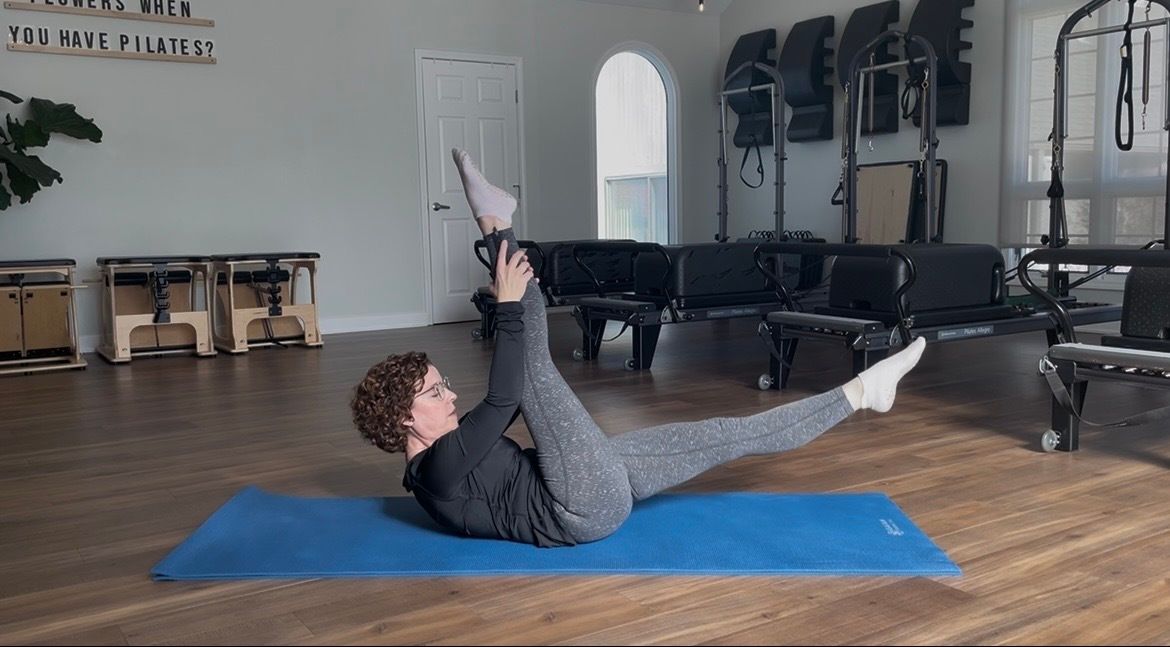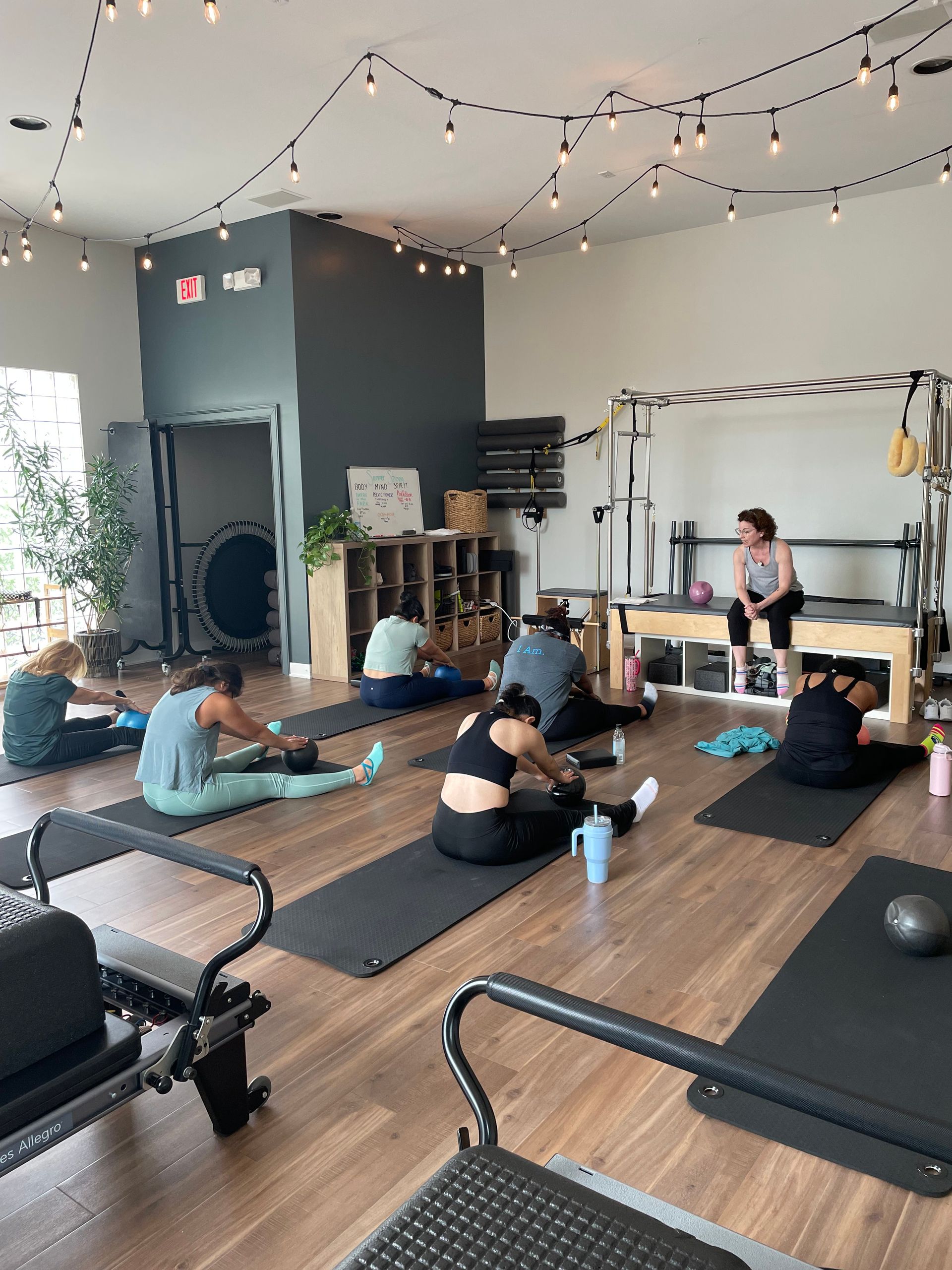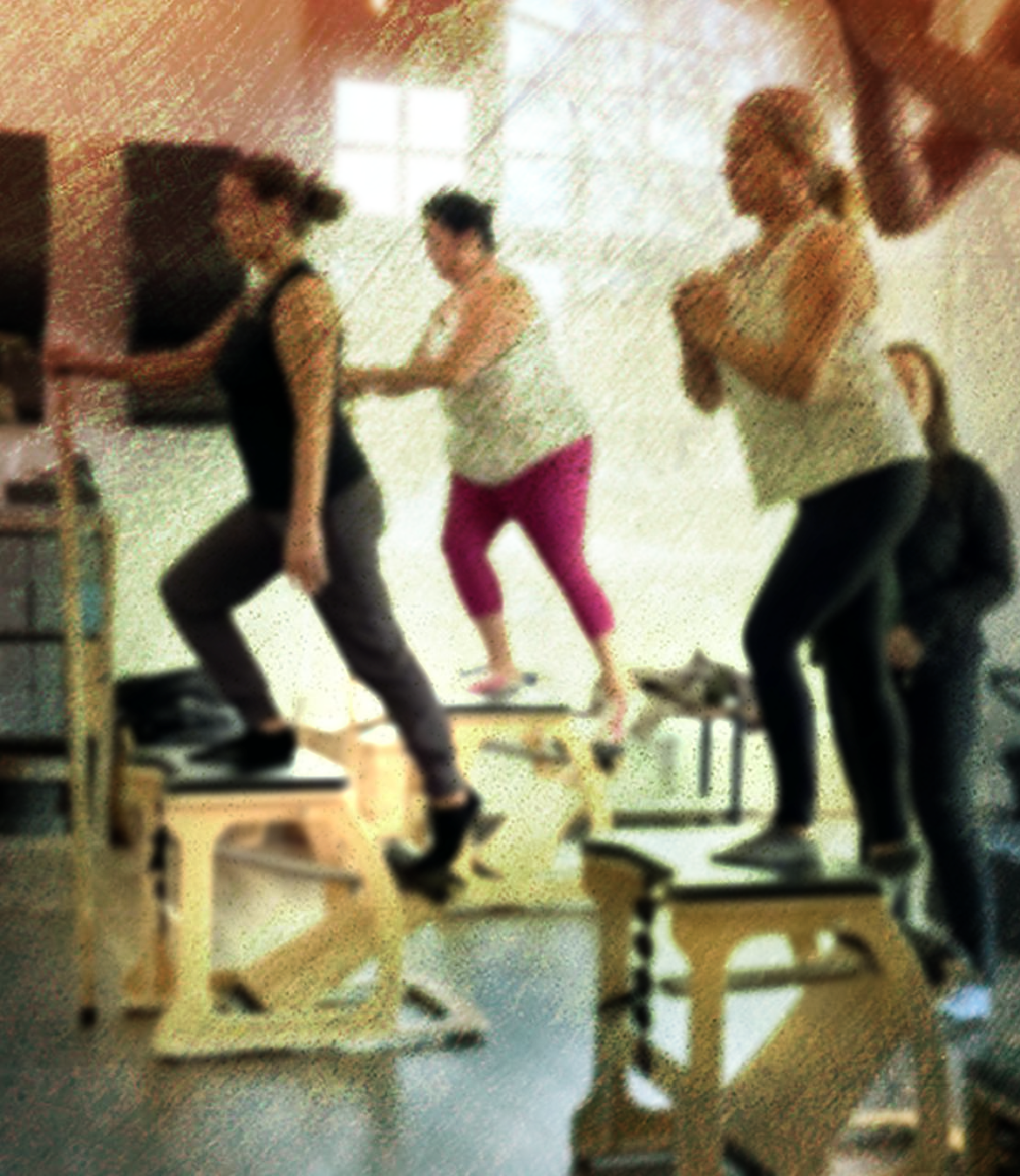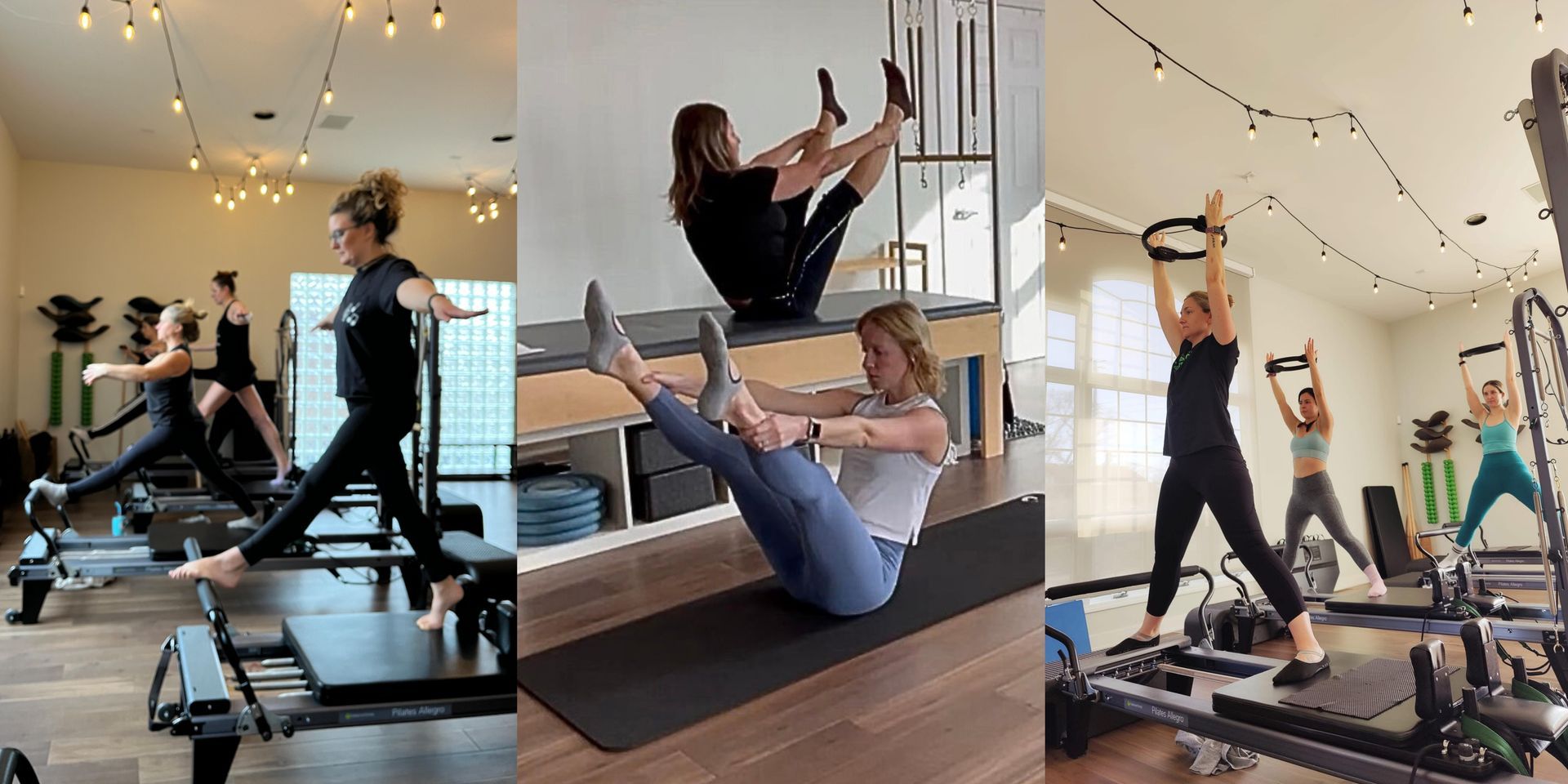Pilates for Pelvic Strength: A Plan for Beginners
You may be hearing about the importance of pelvic floor health. In this blog we dive into the reasons behind the movement and tips for building a better pelvic health practice.
If you're new to this kind of movement, or just curious about what pelvic floor health is, welcome! You're in the right place. Our goal is to offer a gentle introduction to strengthening your pelvic floor—no pressure, just steady, sustainable practices that meet you exactly where you are. With time, you may notice better alignment in your hips and pelvis, more ease in your movement, and less tension throughout your day.
Understanding The Pelvic Floor
The pelvic floor might not be something you think about every day, but it plays a huge role in how you move and feel in your body.
It’s a group of muscles that supports your internal organs (like your bladder, bowel, and uterus), helps maintain continence, and contributes to your overall core stability. The more you understand how these muscles work, the more intentional your movement can become, especially in your Pilates practice.
What is the Pelvic Floor?
Picture a hammock at the base of your pelvis, made of muscle and connective tissue. That’s your pelvic floor—offering quiet, constant support.
Importance of Pelvic Floor Strength
When the pelvic floor is functioning well, it provides support and ease in everything from walking and standing to lifting, laughing, and sneezing. It’s not about perfection; it’s about giving your body the strength and support it needs to move through life with more confidence.
Benefits of Pilates for Pelvic Strength
Pilates exercises improve core strength and pelvic flood strength and may be executed with breath work (National Library of Medicine, 2020). These benefits contribute to a healthier lifestyle.
A few of the benefits you might notice:
- Improved core strength
- Enhanced flexibility
- Better posture
- Reduced lower back pain
As you move with intention and curiosity, your body begins to feel more integrated and resilient.
Movement Therapy for the Pelvic Floor
Pilates can serve as effective movement therapy. It can help in promoting blood flow and muscle relaxation within the pelvic floor, enhancing function.
Strengthening Pelvic Muscles Through Pilates
Rather than forcing or gripping, Pilates teaches you how to move from your center with control and clarity. This approach naturally engages and strengthens the pelvic floor without adding strain.
Key Concepts in Pilates for Pelvic Strength
A few core ideas can help you get the most out of your practice. Keep these in mind as you begin:
- Hip and pelvic alignment
- Move in ways that mirror real-life function
- Controlled breathing
- Core engagement
Incorporating these principles ensures proper form and maximizes the benefits of each exercise. They lay the foundation for developing a strong and healthy pelvic floor.
Hip and Pelvic Alignment
Proper hip and pelvic alignment is crucial in Pilates. It ensures movements are effective, reducing the risk of injury and enhancing muscle activation.
Functional Movement Patterns
Pilates supports how you live, not just how you exercise! By practicing functional movement patterns, you’re training your body to move well both on and off the mat.
Essential Pilates Exercises for Beginners
There’s no need to start big. Beginning with foundational movements allows you to build strength with care and awareness. Be sure to check in with your healthcare provider to find what’s best for your body.
Pelvic Floor Exercises
These simple, focused movements help you connect with your deep core muscles. With time, they improve how you support your organs and maintain stability through daily movement.
Kegels:
Kegels can enhance pelvic strength by contracting and relaxing pelvic floor muscles. These exercises are simple yet can be highly effective when performed consistently.
Bridge
The Bridge strengthens the glutes and lower back. It also engages the pelvic floor. This exercise aids in improving hip and pelvic alignment.
Abdominal Toning Exercises
Abdominal toning exercises in Pilates help maintain core stability. They play a crucial role in supporting the spine and enhancing pelvic strength.
The Hundred
The Hundred increases core strength and endurance. It involves rhythmic breathing and core engagement. This foundational Pilates exercise is an excellent abdominal toner.
Single Leg Stretch
The Single Leg Stretch focuses on core engagement and balance. It helps in toning the abdominal muscles, contributing to a strong pelvic floor.
Pelvic Floor Relaxation Techniques
Relaxation techniques help in maintaining muscle balance. They are essential for ensuring flexibility and reducing tension in the pelvic area.
Creating Your Pilates Routine
There’s no one-size-fits-all approach here. Your practice can be a mix of strength-building, breathwork, and gentle release. A few supportive elements to include:
- Pelvic floor exercises
- Abdominal toning routines
- Breathing practices
- Relaxation techniques
Let your routine reflect your needs, your pace, and your energy. Progress comes from listening to your body and adjusting as you go.
Frequency and Duration of Practice
Aim for three to four Pilates sessions weekly. Each session should last around 30 to 50 minutes. Consistent practice is vital to achieve pelvic strength and overall stability.
Tips for Maintaining Consistency
Keep your space inviting and your goals gentle. Consistency doesn't have to mean doing the same thing every time—switch up your movements, follow your breath, and let your curiosity lead the way.
Next Steps
This work is about more than building strength; it’s about coming home to your body in a deeper way. Be kind to yourself, stay steady in your practice, and trust that the shifts will come. Want to learn more about beginning a pelvic health practice? Schedule a one-on-one private appointment with one of our instructors today, or give us a call today.



